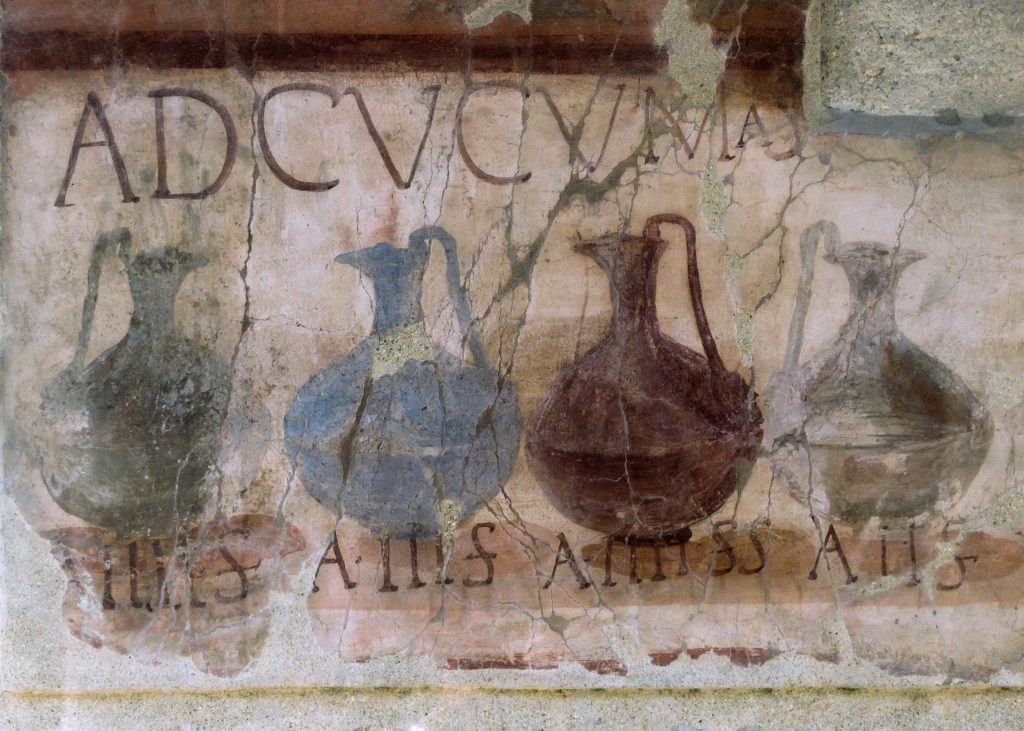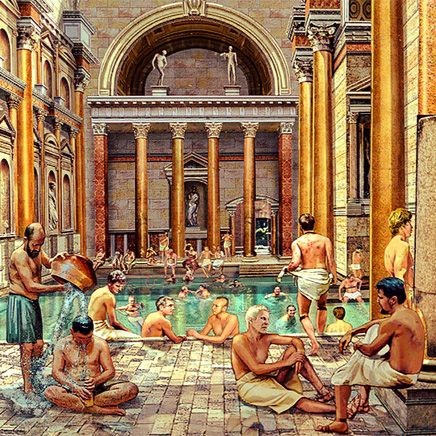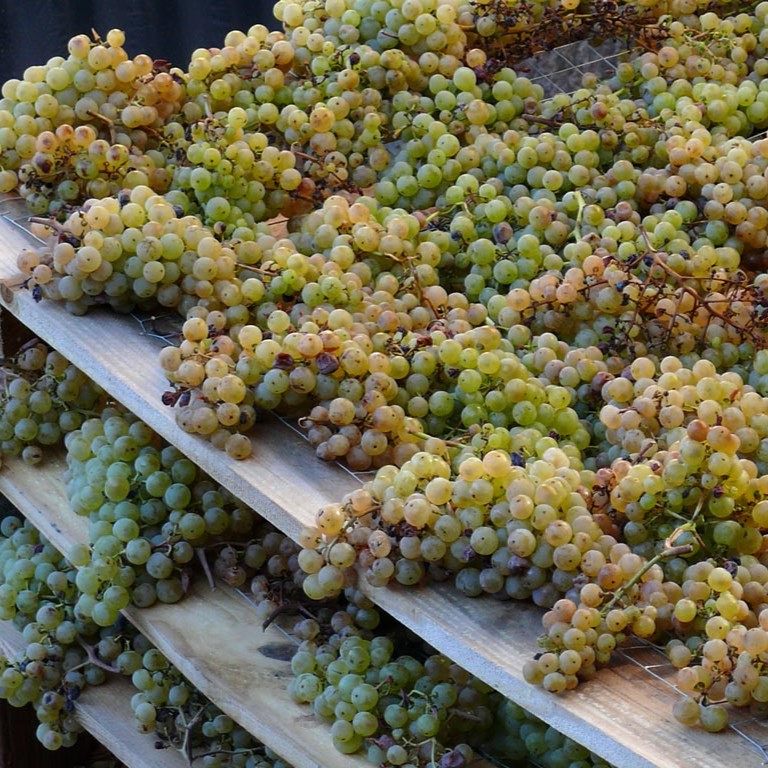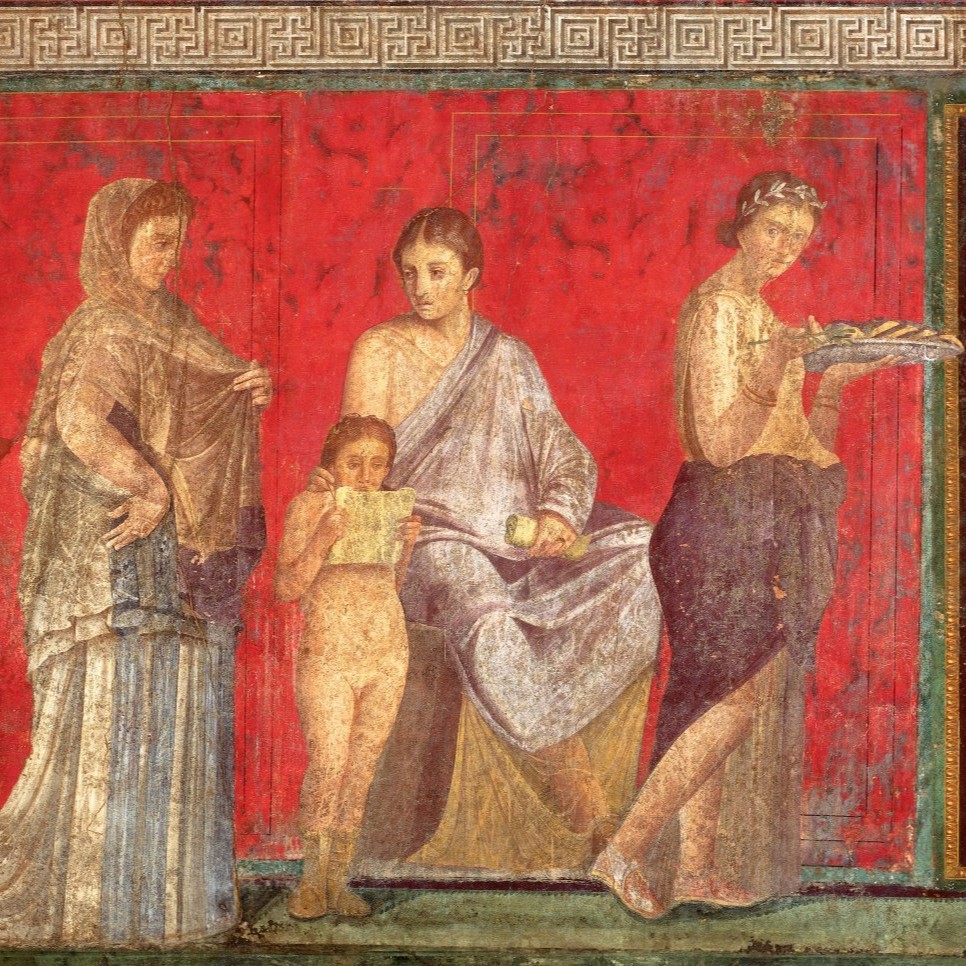Translated from french with Deepl (please notify us of errors)

From the top of these four jugs, almost 2,000 years look down on us. The fresco was discovered in a street in Herculaneum in 1961, at eye level, i.e. 1.70 metres above the ground. It is almost certainly a shop sign[1], a rare find since only one other example is known to exist in this city, which was buried by Vesuvius in 79 AD.
Above the jugs, we can read AD CUCUMAS, which translates as ‘At the cauldrons’. This is probably the name of the establishment. The word cucuma is rare in Latin literature, which indicates that the owner of the premises was making an effort to be original.
Containers or contents?
What was sold ‘At the cauldrons’? Containers or contents?
Historians in favour of the first view quickly lost the argument. Containers, especially bronze ones, were sold by weight, not by the unit. In the rubble of the shop, no stock was found, and not a single scale either.
What’s more, the prices shown on the underside of the jugs are accompanied by a horizontally-stripped S sign, a symbol used in Antiquity to abbreviate the words secutor (a category of gladiator), servus (‘slave’) or sectus / sectarius (a sixth). In this case, it’s obviously the latter meaning that’s important: the ‘sixth’ in question represents a sextarius, a Roman unit of measurement for liquids equivalent to 5.47 decilitres.
So we have a list of prices that decrease from left to right. For the contents of a green jug, 4 aces would buy 1 sextarius; for a blue jug, 3 aces would buy 1 sextarius; for a red jug, 4 aces would buy 1.5 sextarius; and for a white jug, 2 aces would buy 1 sextarius.
Under Emperor Tiberius, a labourer earned around 16 as per day. A legionnaire earned the same amount. This meant that a worker or soldier could afford around 2 and a half litres of the most precious of liquids and twice as much of the most common, if he used up his entire daily wage.
Falerne is overpriced
Given the high price, this liquid was almost certainly wine. There’s nothing to suggest this on the shop sign, but the prices are consistent. And the discovery in the shop of a marble statuette representing the head of Bacchus reinforces this interpretation.
Of course, it is impossible to say which wines were involved. The famous Falerna from Campania, for example, praised by Horace and criticised by Pliny?
“Second place [among wines] was given to Falerno, and especially to Falerno Faustiano. Its merit was due to care and cultivation; it has fallen today, since we aim more for quantity than quality”[2]
The wine in the green jug had to be good, Falerne or otherwise. The four colours provide no clues as to the wines they represent. They are also symbolically associated with the seasons and the horse-racing factions, but that doesn’t really help us… As the stall was barely 10 m2, it was probably a takeaway. It was not an on-trade outlet.

No scams here
But let’s look at something that has been overlooked until now. On the wall of Herculaneum, the sign ‘To the cauldrons’ is not isolated. It is dominated by a large fresco. It depicts a figure whose attributes were insufficient for him to be immediately recognisable. Admittedly, it is a god, as indicated by the uncovered head crowned with foliage, but which one? So the person who commissioned the fresco thought it necessary to add an indication: AD SANCVS. Commentators recognise a Roman divinity dating back to archaic times, Semo Sancus[3]. As attested by the qualifier ‘sancus’, which means ‘he who confirms, who guarantees’, Semo is the dius fidius, the god who personifies good faith and the solidity of oaths.
The owner of the shop may have commissioned the fresco out of personal devotion… but it also had a commercial message: ‘in an establishment under the patronage of Semo Sancus, you can be sure of not being ripped off’.
As we shall see in another article on the practices of wine sellers and innkeepers, the declaration of probity by the owner of the ‘Chaudrons’ was far from superfluous.
[1] See the images on HerculanumInPictures.
[2] Pliny the Elder, Natural History, Book XIV, VIII, 3: Secunda nobilitas Falerno agro erat et ex eo maxime Faustiniano; cura culturaque id collegerat. Exolescit haec quoque copiae potius quam bonitati studentium.
Find out more
- Nicolas Monteix, Les lieux de métier: boutiques et ateliers d’Herculanum, École française de Rome, 2010, Collection du Centre Jean Bérard, 34.
April 2024, reproduction prohibited
Other articles in English from the Nunc est bibendum blog








